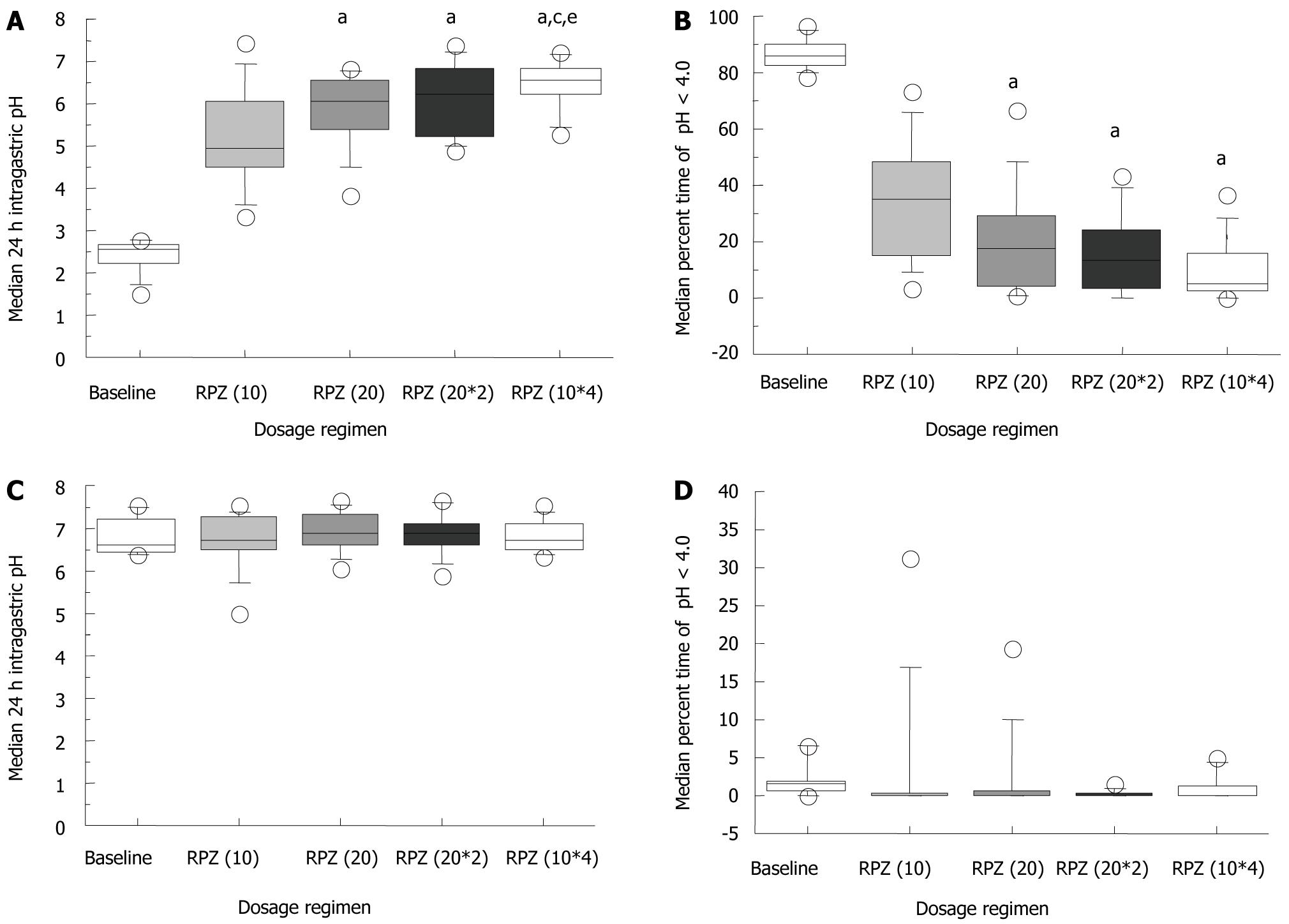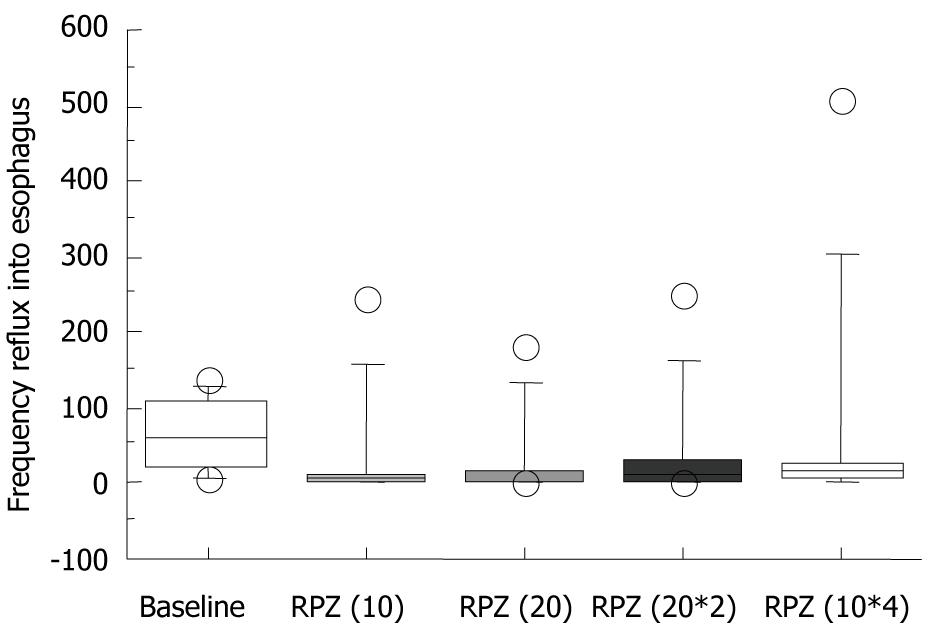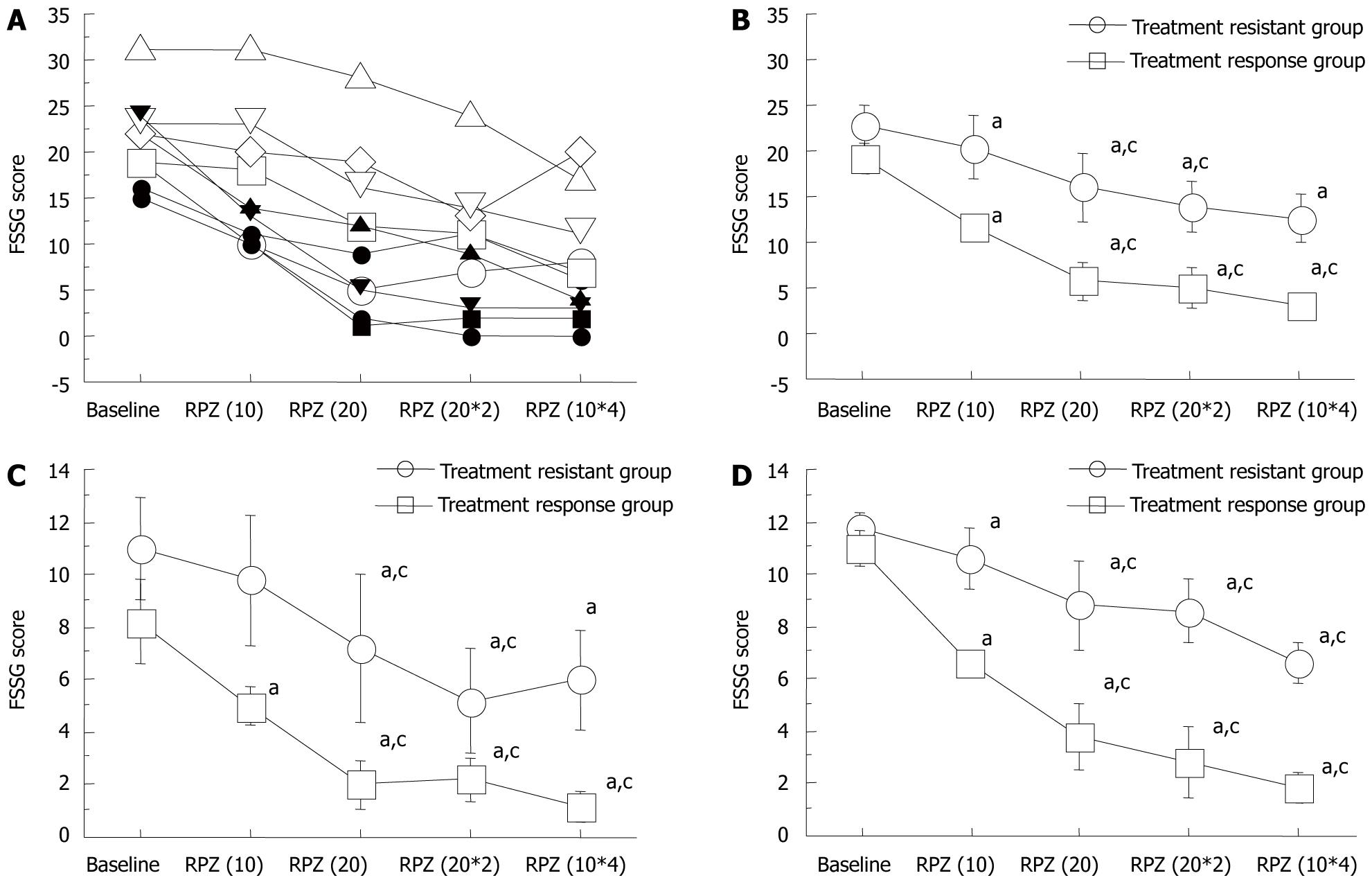Copyright
©2011 Baishideng Publishing Group Co.
World J Gastroenterol. Apr 14, 2011; 17(14): 1858-1865
Published online Apr 14, 2011. doi: 10.3748/wjg.v17.i14.1858
Published online Apr 14, 2011. doi: 10.3748/wjg.v17.i14.1858
Figure 1 Median 24 h intragastric and intraesophageal pH (A and C) and median percentage time with intragastric and intraesophageal pH < 4.
0 (B and D) with five different treatment regimens on day 14. aP < 0.05 [vs RPZ (10) ]; cP < 0.05 [vs RPZ (20) ]; eP < 0.05 [vs RPZ (20*2) ]. RPZ: Rabeprazole.
Figure 2 Number of reflux episodes of gastric contents to the esophagus with five different treatment regimens on day 14.
RPZ: Rabeprazole.
Figure 3 Median total (A), acid reflux (B) and dysmotility (C) Frequency scale for the symptoms of gastroesophageal reflux disease scores.
Frequency scale for the symptoms of gastroesophageal reflux disease scores in RPZ(20), RPZ(20*2), and RPZ(10*4) regimens significantly improved compared with that at baseline and RPZ(10). aP < 0.05 [vs baseline (10) ]; cP < 0.05 [vs RP (10) ]; eP < 0.05 [vs RP (20) ]. RPZ: Rabeprazole; FSSG: Frequency scale for the symptoms of gastroesophageal reflux disease.
Figure 4 Median intragastric and intraesophageal pH in subjects responsive (n = 5) and refractory (n = 5) to rabeprazole 10 mg qid.
Median intragastric pH was the same in patients responsive and refractory to RPZ 10 mg qid. RPZ: Rabeprazole.
Figure 5 Each patient’s (A), total (B), acid reflux (C) and dysmotility (D) FSSG scores in subjects with non-erosive gastroesophageal reflux disease responsive and refractory to the rabeprazole(10*4) regimen.
Frequency scale for the symptoms of gastroesophageal reflux disease (FSSG) scores in subjects with non-erosive gastroesophageal reflux disease (NERD) who responded to the RPZ(10*4) regimen improved > 30% compared with baseline with rabeprazole 10 mg od. RPZ: Rabeprazole. aP < 0.05 [vs baseline ]; cP < 0.05 [vs RP (10) ].
- Citation: Sugimoto M, Nishino M, Kodaira C, Yamade M, Uotani T, Ikuma M, Umemura K, Furuta T. Characteristics of non-erosive gastroesophageal reflux disease refractory to proton pump inhibitor therapy. World J Gastroenterol 2011; 17(14): 1858-1865
- URL: https://www.wjgnet.com/1007-9327/full/v17/i14/1858.htm
- DOI: https://dx.doi.org/10.3748/wjg.v17.i14.1858













